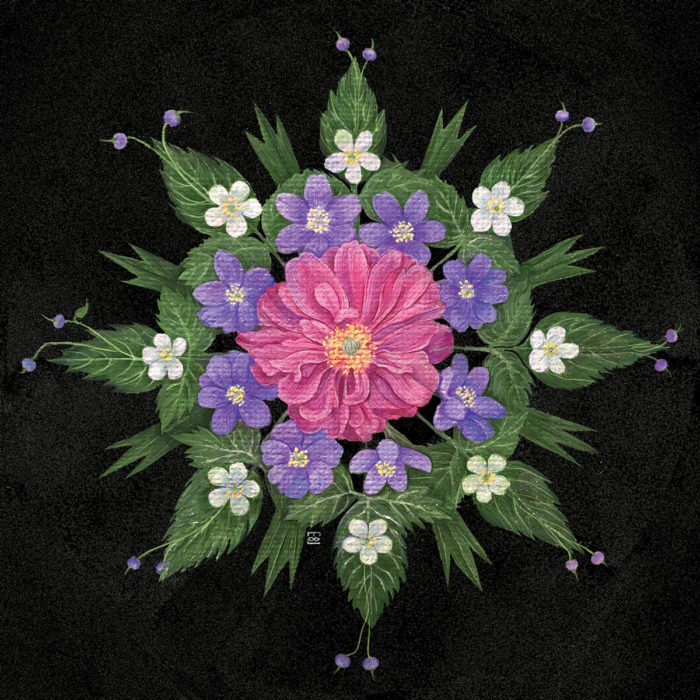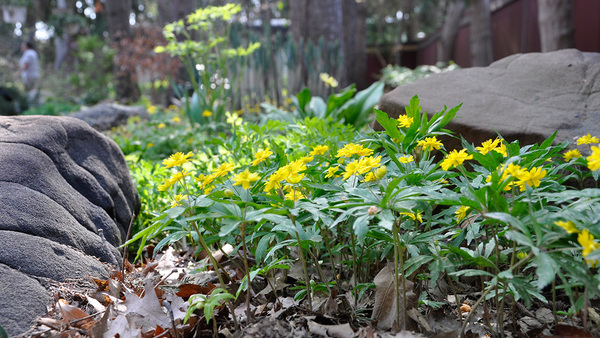
It’s been many years now since a friend gave me meadow anemone (Anemone canadensis). I was happy to receive it. It brought back fond memories of spring walks through the woodlot on my uncle’s Wisconsin farm. I was smitten with its snowy beauty under the fresh green shade of sugar maples in June. And besides, it was free—but it came at a cost.
I planted the three fragile rhizomes my friend gave me in a dark and neglected corner of a client’s property. It took only two short years for it to creep out of that corner, toward the light no doubt, and into the crown of every neighboring perennial and ground cover. When I dug these perennials to move them out of the marauder’s path, I inadvertently moved the anemone too, creating an ever- increasing problem. Each spring when it is done blooming, I take a certain irritated joy in tearing it out by the handful. This irritation belies my affection for meadow anemones, and all anemones for that matter.
Botanists are a bit irritated with anemones; they can’t seem to settle on a definitive number of species. Is it 120 or 150, or somewhere in between? Anemones range throughout temperate Eurasia, being represented in the native floras of Japan as well as England, and just about everywhere else. In North America we have 25 species; Washington, where I live, is home to 10 of them.
But as garden plants, and even weeds, they are everywhere.
In spring a few years back, I was hiking the rim trail of Kilauea Iki in Volcanoes National Park on the Big Island of Hawaii. I barely recognized a single plant of the strange native flora of the islands. No anthuriums, no orchids, not even a palm tree grew along the trail. But there was one strangely familiar plant in the understory, a rather aggressive ground cover standing nearly 3 feet high. A few yards later I came upon a crew of park workers grubbing it out. I asked what this plant was. “Japanese anemone,” responded one of the workers.
It was actually Anemone hupehensis, one of the three species of Asian anemones that go into some spectacular garden flowers. Early nineteenth-century hybrid Japanese anemones such as ‘Honorine Jobert’, ‘Queen Charlotte’, or ‘Whirlwind’ are probably in your garden. I grow the “newcomer” from 1902: ‘Prince Heinrich’. It barrels along in dry shade year after year. When it finishes blooming in October, I crank up the weed whacker and take it to the ground. I haven’t disrupted its progress yet. Thus are the anemones.
Spring seems to be made for anemones, and I think no shade garden should be without the European native wood anemone (A. nemerosa). I have not grown all of the 70 cultivars out there, but I let the periwinkle-flowered ‘Dee Day’ and the white powder-puff ‘Vestal’ spread all they want under the shrubs in my garden. Theirs is an innocuous sort of aggression, as they fade into the duft as spring ends.
The word anemone comes from the Greek, roughly translated, for “daughter of the wind.” It was long believed that anemones only bloomed in windy weather. Certainly the Grecian windflower (A. blanda) blooms in the earliest part of spring when the weather is quite volatile. What I like about Grecian windflower is that it is as cheap as table salt and can be planted by the handful in the fall without a thought. It colonizes ever so timidly, making its relatives seem like downright weeds.
So this spring—which will certainly be as full of temptations and bad judgments as every other—be careful. If someone offers you a free plant, be sure to ask, “Are you a friend, or an anemone?”
—Daniel Mount is a gardener and writer in Carnation, Washington.
Fine Gardening Recommended Products

A.M. Leonard Deluxe Soil Knife & Leather Sheath Combo
Fine Gardening receives a commission for items purchased through links on this site, including Amazon Associates and other affiliate advertising programs.


















Comments
Log in or create an account to post a comment.
Sign up Log in